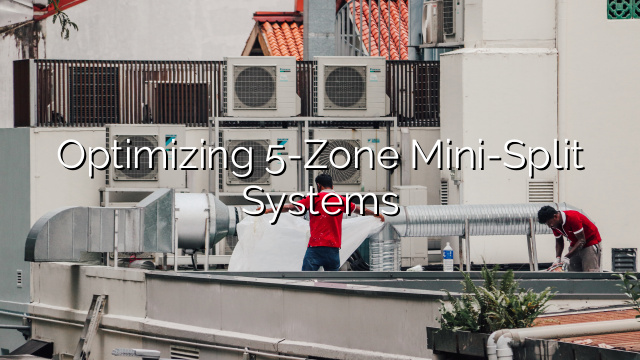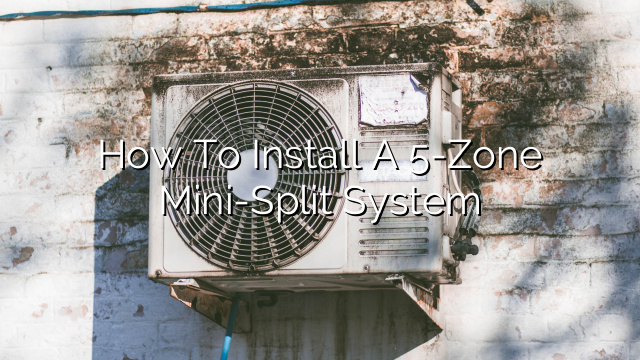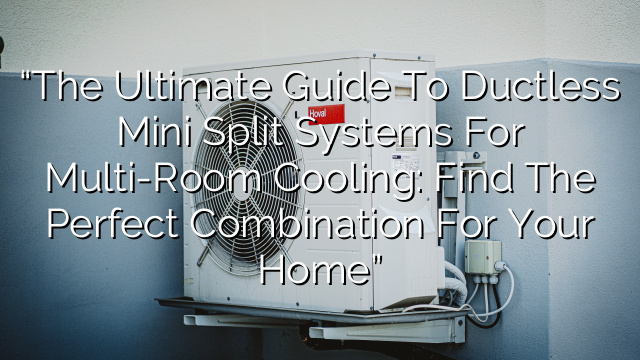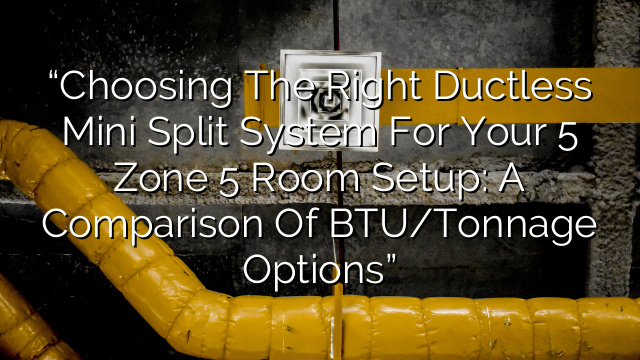Conclusion
In conclusion, a 5-zone mini-split system offers numerous advantages for efficient and flexible cooling and heating. By properly sizing the equipment, implementing effective zoning strategies, utilizing ductless indoor units, and conducting regular maintenance, you can optimize the performance of your system and achieve significant energy savings.
FAQs
Q: Can I install a 5-zone mini-split system myself?
A: While some homeowners may have the necessary skills to install a mini-split system, it is generally recommended to hire a professional HVAC technician. Proper installation is crucial for optimal performance and to ensure the warranty remains valid.
Q: How much can I save on energy costs with a 5-zone mini-split system?
A: Energy savings can vary depending on factors such as the size of the space, insulation quality, and climate conditions. However, using a 5-zone mini-split system with proper sizing and zoning strategies can significantly reduce energy consumption and lead to cost savings on your utility bills.
The Advantages of 5-Zone Mini-Split Systems
Mini-split systems have become increasingly popular in recent years, providing efficient and flexible cooling and heating solutions for homes and businesses. One of the most versatile options available is the 5-zone mini-split system, which allows for independent temperature control in up to five different areas or rooms.
Optimizing a 5-zone mini-split system can provide even greater comfort and energy savings, making it an ideal choice for larger homes or commercial spaces. In this article, we will explore some tips and best practices for maximizing the performance of your 5-zone mini-split system.
1. Proper Sizing
One of the most important factors in optimizing a 5-zone mini-split system is ensuring that you have the right size equipment for your space. Choosing the correct capacity for each zone is crucial for achieving efficient and consistent cooling and heating.
Undersized units will struggle to maintain the desired temperature in larger areas, leading to excessive energy consumption and wear on the system. On the other hand, oversized units can cause short cycling, which can result in poor dehumidification and increased energy usage.
To determine the proper size for each zone, it’s crucial to consider factors such as the size of the space, the number of occupants, the insulation quality, and the climate conditions. Consulting with a professional HVAC technician can help ensure that you select the right equipment for optimal performance.
2. Zoning Strategies
The ability to independently control each zone in a 5-zone mini-split system provides excellent flexibility for users. Implementing effective zoning strategies can help further optimize the performance of the system and maximize energy savings.
Zone Grouping: Consider grouping together areas with similar heating and cooling needs. For example, bedrooms can be grouped together, while living spaces can be zoned separately. This way, each area can be controlled independently, providing customized comfort and reducing energy consumption.
Occupancy Sensors and Timers: Integrating occupancy sensors or timers with the mini-split system can help automate the temperature control process. When a room is unoccupied, the system can automatically adjust the temperature or turn off to conserve energy.
3. Utilizing Ductless Indoor Units
5-zone mini-split systems typically utilize ductless indoor units, which offer several advantages over traditional central HVAC systems.
Flexible Installation: Ductless indoor units require minimal installation work, and they can be easily mounted on walls or ceilings. This flexibility allows for more efficient and targeted cooling and heating in different areas.
Zonal Control: With ductless indoor units, each zone can have its own thermostat and temperature control. This zonal control eliminates the need to cool or heat the entire house or building, reducing unnecessary energy usage.
Enhanced Comfort: Ductless indoor units provide individual temperature control, ensuring that each occupant can set their preferred temperature for optimal comfort. This is especially beneficial in multi-family dwellings or commercial spaces with variable occupancy levels.
4. Regular Maintenance
To keep your 5-zone mini-split system operating at peak efficiency, regular maintenance is essential. Some maintenance tasks you can perform include:
- Cleaning or Replacing Air Filters: Dirty air filters can reduce the system’s airflow and decrease its efficiency. Clean or replace the filters regularly to maintain optimal performance.
- Cleaning the Indoor and Outdoor Units: Dust and debris can accumulate on the indoor and outdoor units, impacting their efficiency. Clean the units periodically to ensure unrestricted airflow.
- Checking for Refrigerant Leaks: Low refrigerant levels can lead to reduced cooling or heating capacity. Regularly check for and repair any refrigerant leaks to maintain optimal performance.
- Scheduling Professional Maintenance: Regular professional maintenance by an HVAC technician is recommended to address any potential issues and ensure the system is operating efficiently.






